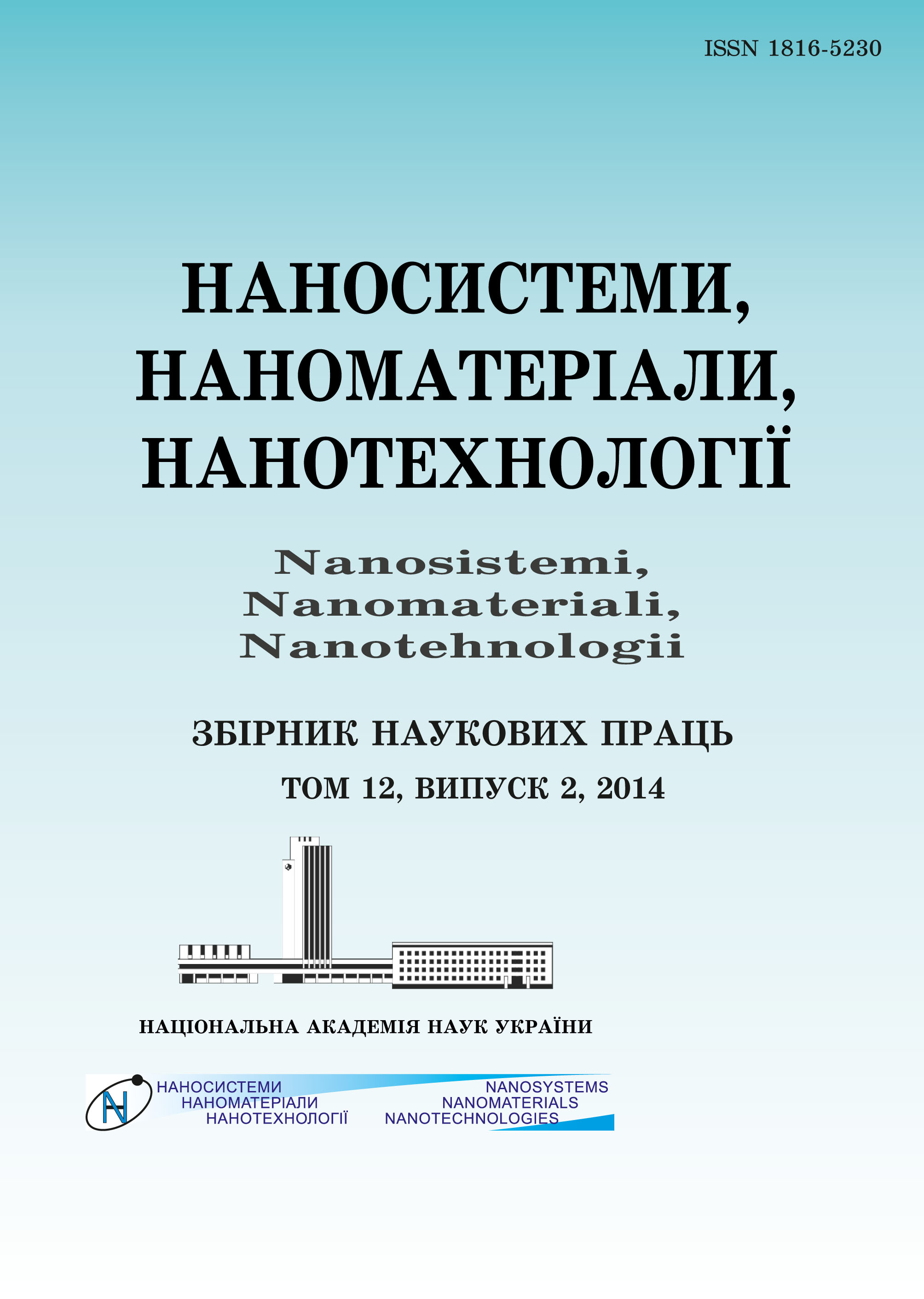|
|
|||||||||

|
Year 2024 Volume 22, Issue 4 |
|
|||||||
|
|||||||||
Issues/2024/vol. 22 /issue 4 |
|
V.V. GONCHARUK, A.S. MAKAROV, L.V. DUBROVINA, I.M. KOSYGINA, and
I.M. KRUCHKO
‘Dry Water’ Fire Extinguishing Powders with
Sodium Bicarbonate
1013–1023 (2024)
PACS numbers: 81.05.Zx,81.07.Wx,81.16.Dn,82.30.Lp,82.33.Vx,82.70.Dd,82.70.Uv
The emergence of new effective and safe fire extinguishing agents can be attributed to the appearance of dry water fire extinguishing materials in the last decade. In order to improve the fire extinguishing properties of dry water, the article studies the effects of both the method of mixing hydrophobic methyl silica AM-1-300 (Ukraine) with water and the addition of sodium bicarbonate (baking soda) of various concentrations on the texture and properties of the resulting dry water fire extinguishing powder. Dry water fire extinguishing powder is obtained by mixing the components at a speed of 15 000 rpm for 10 s. Samples containing 10 wt.% methyl silica, 2, 4, 6 and 8 wt.% sodium bicarbonate and the appropriate concentration of water are made. Adding 2 and 4 wt.% NaHCO3 to preliminarily prepared dry water results in a cream-like material; at a concentration of 6 and 8 wt.%, the formation of a two-phase system of a suspension of methyl silica in water and an aqueous solution of sodium bicarbonate is observed. When adding to methyl silica an aqueous solution of NaHCO3 with a concentration of 2, 4 and 6 wt.%, separation into two phases is also observed; at a NaHCO3 concentration of 8 wt.%, a wet coarse powder is formed. With the simultaneous mixing of all components, a dry water powder is obtained. The bulk density is of 0.321, 0.299, 0.276 and 0.271 g/cm3 for samples with 2, 4, 6 and 8 wt.% of sodium bicarbonate, respectively. Optical microscopy has shown that the particles of the dry water powder have a clearly visible ‘core–shell’ structure. Dry water fire extinguishing powder is a polydisperse system, i.e., most of the particles are single fine particles of 1 micron or less in size; there are also agglomerates of about 2 microns in size. The fire extinguishing properties of the obtained dry water powders are studied by spraying them onto a layer of burning gasoline A-92 on the water surface. The time to complete extinguishing of the fire and the consumption of the substance per unit area of burning are determined. As found out, the extinguishing time of gasoline and the consumption of dry water fire extinguishing powder for extinguishing it decrease with increasing NaHCO3 concentration and, for 2, 4, 6, 8 wt.%, are of 5.2, 4.9, 4.3, 3.8 s and 0.373, 0.370, 0.313, 0.217 g/cm3, respectively
KEY WORDS: hydrophobic silica, dry water, sodium bicarbonate, fire-extinguishing powders, extinguishing gasoline
DOI: https://doi.org/10.15407/nnn.22.04.1013
REFERENCES
- A. V. Antonov, V. O. Borovikov, V. P. Orel, V. M. Zhartovskij, and V. V. Kovalishin, Vognegasni Rechovyny: Posibnik [Fire Extinguishing Substances: Manual] (Kyiv: Pozhinformtekhnika: 2004) (in Ukrainian).
- Fire and Rescue Statistical Release (Great Britain: Department for Communities and Local Government: 2020); https://www.gov.uk/government/collections/fire-statistics-monitor (accessed September 12, 2022).
- N. N. Brushlinskiy, S. V. Sokolov, and M. P. Grigoreva, Fires and Emergencies: Prevention, Liquidation, 4: 5 (2022) (in Russian); https://doi.org/10.25257/FE.2022.4.5-12
- Yu. A. Abramov and A. A. Kireev, Geleobrazuyushchie Ognetushashchie i Ognezashchitnyye Sredstva Povyshennoy Ehffektivnosti Primenitelno k Pozharam Klassa A [Gel-Forming Fire-Extinguishing and Fire-Retardant Agents of Increased Efficiency in Relation to Class A Fires] (Kharkiv: NUGZU: 2015) (in Russian).
- N. M. Kozyar, Pozhezhna Bezpeka, 24: 79 (2014) (in Ukrainian).
- D. Schutte, Predominantly Aqueous Compositions in Fluffy Powdery Form Approximating Powdered Solids Behavior and Process for Forming Same (Patent 3393155 US (1968)).
- B. D Allan, Dry Water (Patent 4008170 US (1977)).
- K. Saleh, L. Forny, P. Guigon, and I. Pezron, Chem. Eng. Res. Design., 89: No. 5: 537 (2011); https://doi.org/10.1016/j.cherd.2010.06.005
- Y. Wang, G. Zhu, G. Chai, Y. Zhou, C. Chen, and W. Zhang, Case Studies in Thermal Eng., 26: 101177 (2021); https://doi.org/10.1016/j.csite.2021.101177
- X. Ni, S. Zhang, Z. Zheng, and X. Wang, J. Hazard. Mater., 341: 20 (2018); https://doi.org/10.1016/j.jhazmat.2017.07.040
- X. Chen, A. Fan, B. Yuan, Y. Sun, Y. Zhang, and Yi Niu, J. Loss Prev. Process. Ind., 59: 14 (2019); https://doi.org/10.1016/j.jlp.2019.02.008
- Y. Zou, K. Li, B. Yuan, X. Chen, A. Fan, Y. Sun, S. Shang, G. Chen, C. Huang, H. Dai, and Y. Yun, Powder Technol., 356: 383 (2019); https://doi.org/10.1016/j.powtec.2019.08.034
- J.-M. Cabrera, Systems and Methods of Continuously Producing Encapsulated Liquid Water (Patent 9724663 US (2017)).
- E. Lee, H. Son, and Y. Choi, Korean J. Chem. Eng., 37: 1642 (2020); https://doi.org/10.1007/s11814-020-0632-0
- Q. Wang, F. Wang, C. Li, Z. Li, and R. Li, RSC Adv., 17: 9827 (2021); https://doi.org/10.1039/d1ra00253h
- D. A. Korolchenko, Pozharovzryvobezopasnost, 39, No. 5: 51 (2016) (in Russian); https://doi.org/10.18322/PVB.2016.25.02.51-58
- V. K. Abrosimov, L. S. Efremova, E. V. Ivanov, and Yu. P. Pankratov, Rus. J. Phys. Chem., 74, No. 5: 752 (2000).
- N. F. Bunkin and F. V. Bunkin, Physics-Uspekhi, 59, No. 9: 846 (2016); https://doi.org/10.3367/UFNe.2016.05.037796
- R. Iler, Chemistry of Silica. Solubility, Polymerization, Colloid and Surface Properties and Biochemistry of Silica (New York: John Wiley: 1979).
- L. Forny, K. Saleh, I. Pezron, L. Komunjer, and P. Guigon, Powder Technol., 189, No. 2: 263 (2009); https://doi.opg/10.1016/j.powtec.2008.04.030
- B. P. Binks and R. Murakami, Nature Mater., 5, No. 11: 865 (2006); https://doi.org/0.1038/nmat1757
 This article is licensed under the Creative Commons Attribution-NoDerivatives 4.0 International License ©2003—2024 NANOSISTEMI, NANOMATERIALI, NANOTEHNOLOGII G. V. Kurdyumov Institute for Metal Physics of the National Academy of Sciences of Ukraine. E-mail: tatar@imp.kiev.ua Phones and address of the editorial office About the collection User agreement |